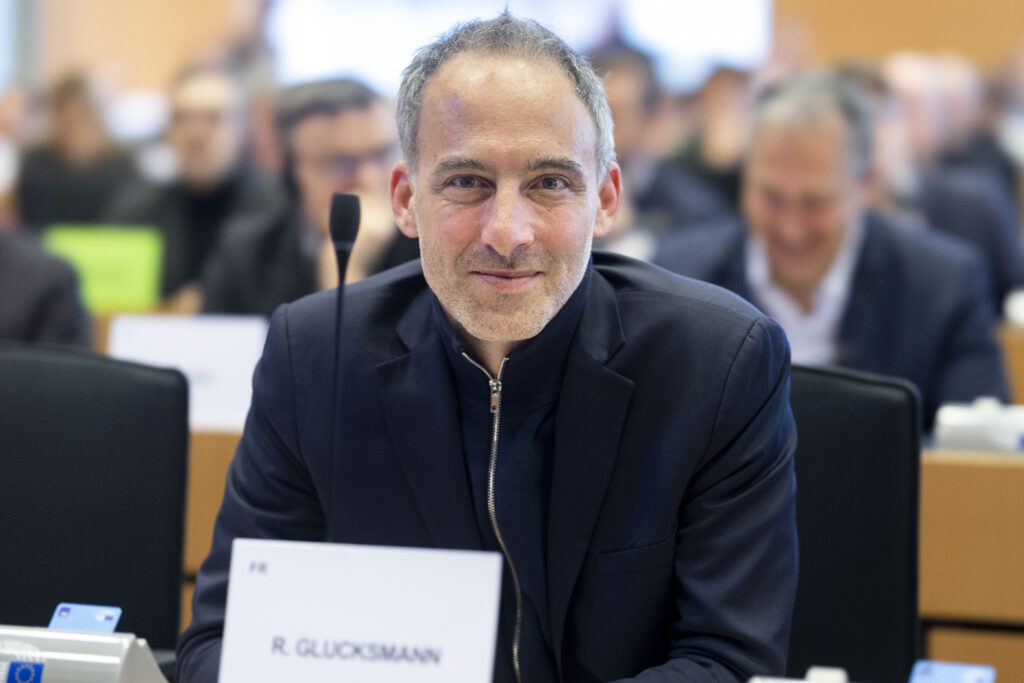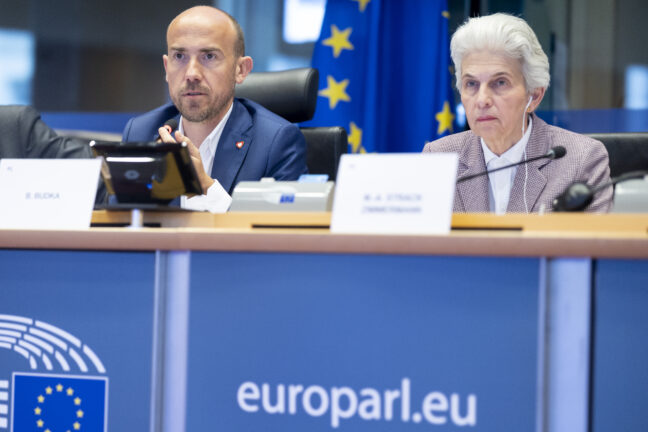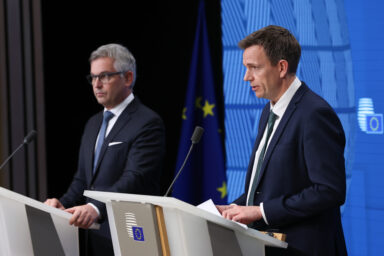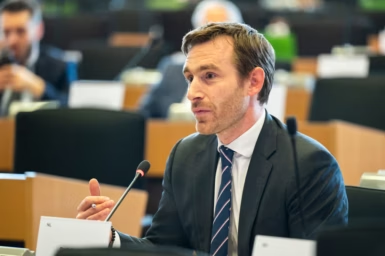European defence—and weapon manufacturers—may enjoy some institutional support as the European Parliament’s key committees back a draft law designed to boost production and to streamline the bloc’s fragmented market.
The joint parliamentary committee (Industry, Research and Energy, and Security and Defence) supported the proposed creation of a European Defence Industry Programme at a joint meeting last Thursday.
Emergency needs and long-term strategic efforts
Members of the ITRE and SEDE committees backed measures to strengthen the European defence technological and industrial base with the interreated goals of enhancing EU defence capabilities, providing military assistance to Ukraine in the presumed future absence of any US aid, and beginning to move towards a degree of integration of the EU defence industry.

The measures are part of EDIP, a regulation proposed by the Commission to start implementing measures identified in the European Defence Industrial Strategy. The regulation aims to bridge the gap between short-term emergency initiatives and long-term efforts to ensure the EU’s defence industrial readiness. They include an increase in member states’ financial contributions to the programme, promote the use of joint procurement, and push for the aggregation of defence orders.
Buy European
Specifically, MEPs want the programme to improve the supply of weapons and ammunition, reduce lead times for production, and boost manufacturing capacities. The agreed principles include the following:
- Firing up EU-wide demand through a European ‘military sales mechanism’, a centralised catalogue of defence products and services.
- The introduction of a “buy European” principle. EDIP should only fund products where the cost of components originating in the EU or associated countries represents at least 70 per cent of the estimated final value of the product. (This was subject to negotiation, as the original EC proposal mentioned 65 per cent.)
- A new Structure for European Armament Programme would “scale up member states’ cooperation throughout the defence equipment lifecycle“, even if solely on a voluntary basis.
- The prevention of future supply crises through a newly established Defence Industrial Readiness Board tasked with „guaranteeing continuous access to essential defence products“.
- Establishing an eligibility threshold for EDIP projects of common interest. The involvement of at least six member states should be required, or at least four countries facing high exposure to the risk of conventional military threats. (“High exposure“ in this context means physical proximity to Russia, reducing the list to Poland, the Baltics, three Scandinavian countries, and possibly Ukraine).
Denmark rules
EDIP also aims to modernise Ukrainian defence industry and integrate it within the EDTIB through a Ukraine Support Instrument. This (basically a variation on “the Denmark way“) would scale up direct investment in Ukraine’s defence industry, as well as foster partnerships between EU and Ukrainian defence entities.
“Our position on the EDIP sends a strong message to the Council to finalise its own position in order to start interinstitutional negotiations. The European Parliament will insist on establishing a strong regulation that will incentivise EU member states to boost joint procurement in order to build common European defence capabilities—stronger, strategic, efficient and united,” said Marie‑Agnes Strack-Zimmermann (Renew/GE), Chair of the Committee on Security and Defence, who chaired the joint meeting.
Sovereignty and resilience
“The adoption of the EDIP report by a large majority today marks a major step for the security of the European continent and the strengthening of our defence industry,“ said François-Xavier Bellamy (EPP/FR), co-rapporteur from the ITRE committee. „With this vote, the European Parliament is setting the bar high for the EU to enhance the sovereignty and resilience of our countries, build an effective governance framework, and design an ambitious and realistic financing solution. Our committees’ work in accelerated procedure means Parliament is ready to tackle the upcoming trilogue stage as soon as the Council has determined its position. This outcome, both in substance and pace, seemed impossible to achieve just a few weeks ago; with this important step, we have shown that our institution is rising to the challenge on this crucial issue for the future of Europe.”
When mentioning “impossible to achieve“, Mr Bellamy was referring to an unnecessary delay in the process. The Commission first introduced EDIP in early March 2024, but the legislation spent the following 13 months on the back burner. One of the reasons was the fact that the SEDE committee could not agree on a co-rapporteur; only on 13 April it appointed Raphaël Glucksmann (S&D/FR). The delay—which was heavily criticised by MEP Christian Ehler (EPP/GE) during a March ITRE meeting—forced the accelerated procedure.
You might be interested
“Small but important improvements”
SEDE was not the only one dragging their feet. While the Socialists and Renew had pushed hard for the adoption of EDIP, the European People’s Party was sitting on the fence. The strongest parliamentary faction had not indicated which way it was going to vote until Thursday’s meeting, and one of its members, Andrzej Halicki (EPP/PL), even asked the joint committee to postpone the vote until June in order to improve the text “to a small but important extent”. (Mr Bellamy, his fellow EPP member, opposed the request; Mr Halicki’s idea was subsequently beaten in a vote.)
The joint committee then adopted the report, even if only by a thin 70:46 margin, with eight abstentions. MEPs also voted to open negotiations with the Council to finalise the law (90:20, five abstentions). The legislation, however, is only expected to feature in the first plenary reading in July.
The philosopher hawk
The SEDE co-rapporteur, Mr Glucksmann, took on his role with gusto. “Today, Parliament has come together with an unprecedented sense of urgency and purpose. In record time, we’ve forged a broad and determined majority in support of strengthening Europe’s defence industrial base—because this is no longer just an option, it’s a strategic imperative,“ said the son of the French philosopher André Glucksmann, a prominent intellectual who spent much of his life in Georgia and Ukraine working to help their nascent democracies prior to entering the European Parliament in 2019.

„Europe stands at a historic crossroads. Faced with Russia’s threats, we must act with unity, ambition and resolve. Investing together, developing critical military capabilities jointly, and aligning our spending efforts at EU level is the only way forward. It’s time to end our dependence on external actors. A sovereign Europe is a stronger and safer Europe, and this vote on the EDIP is a clear step in that direction,” Mr Glucksmann said somewhat hopefully.
Four years for Europe, three days for Russia
How much optimism should Thursday’s meeting generate, remains open to interpretation. The €1.5bn that EDIP brings into the debate comes nowhere near European actual defense needs. “The bottom line is that €1.5bn is not enough for anything,” MEP Ivars Ijabs (Renew/LAT) was quoted as saying by the Euroactiv server.
Neither does the vote indicate a growing defence appetite across the board. On Wednesday, the Legal Affairs Committee backed an opinion rejecting the Commission’s attempt to bypass the Parliament in order to create a €150bn rearmament loan fund.
To put the figures in perspective, the 32 members of NATO spent $1.3tn on their defence last year. While this repreents a year-on-year increase of 19 per cent, Europe and Canada accounted only for $468bn, or €412bn. The US spent $818bn, according to figures released by the Alliance on the same day that the European Parliament joint committee narrowly approved a step towards spending €1.5bn.
The said money is to be spent by the end of 2027. In contrast—to finance its agression against Ukraine, Russia spends the same amount every two or three days.











